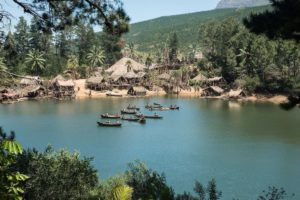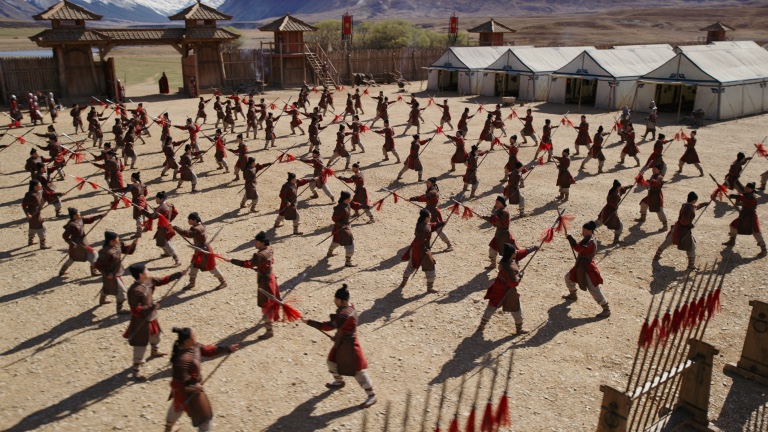The last time we left off with the Emmy Award winning hit show, Black Sails, the crew was preparing for an imminent hurricane. The drama, which is set twenty years before Robert Louis Stevenson‘s book, Treasure Island, did not disappoint in epic twists and adventures this season.
Period pieces are notoriously difficult to shoot, especially when trying to film a boat shot on land in a studio backlot. As a kind of test for the storm episode, Benjamin Cook, supervising sound editor, mixed it in Atmos format to see if he could evoke the feeling of panic they wanted. Having worked on Die Hard and the sorely missed show Deadwood, he was used to experimenting with sub woofers and multiple speakers, as the latter show shot a great deal outside.
In fact, the epic scale of the hurricane scenes called for the sound team to use a new sound particles software to create the storm elements, which helped to amp up the action further. Cook noted, “The show usually deals with big battles, but instead of man versus man, Flint versus Blackbeard, this was man versus the elements.” The unique soundscapes truly lent to the palpable fear of what Mother Nature might let loose on them.

Erik Henry, VFX supervisor, was also prepared for the large scale production, having previously worked on everything from The X-Files to Total Recall. With two Emmys to his name and a nomination for the prestigious Saturn award for Alien Resurrection (1997), he was also ready to tackle depicting dangerous, chaotic elements. When I asked Henry about the intense CG shark scene in the episode, he initially wasn’t certain the concept would work into the story. In the plot, when the ship becomes stranded, John Silver and Flint decide to mine a dead whale for possible food, by approaching it in a row boat. Because the main ship was stuck in what’s known as the Doldrums, the crew needed to stifle the usual noise and even tape down shirts, because the wind was always blowing a gale. The air was supposed to be dead calm. The scene was initially set to film outdoors, but trying to mask the wind in Cape Town was fruitless, and production moved the shoot indoors to make their work day feasible.
The water all around the men in the boat is CG, but to look overboard and see hungry sharks circling the rotting whale and their tiny row boat was indeed terrifying. Suddenly the characters have yet another natural danger to outwit. In a close up, when Flint wrestles the shark on board, they used what is essentially a rubber shark and made it animate. The effects team replaced the body and open mouth of the beast with CG. The harpoon was also replaced by CG. The prop shark however, was taking on more and more water and getting heavier for Flint with every take. For further detail, the departments also wanted to get the skin texture to look natural and show how light would reflect off real sharks. This scene alone took three to four months to shoot. And the results are stunning.

When Christophe Dalberg, the art director, first began his research process on shark lore, he found them to be “quite languid until they strike.” The scene was critically complex and caused a great deal of anxiety, but this pressure allowed the crew to become even more creative and resourceful. In reference to this episode in particular, Dalberg added, “the holistic collaboration across all departments is an accomplishment to be proud of.”






